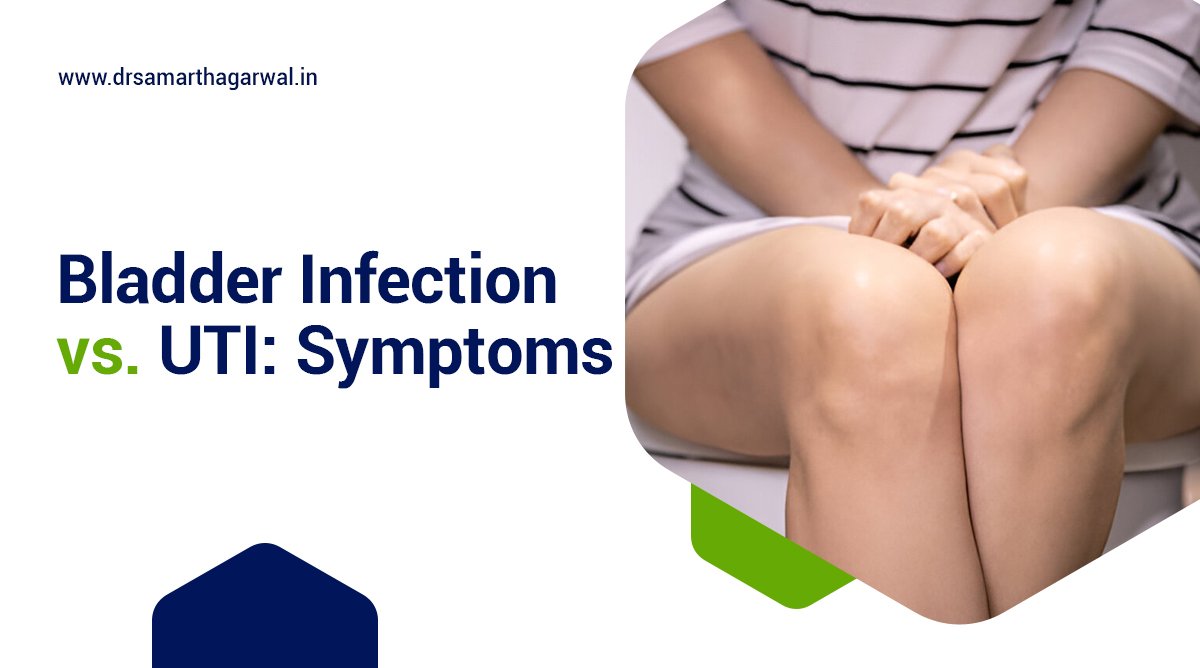Urinary tract infections (UTIs) are common bacterial infections that affect the urinary system, which includes the kidneys, ureters, bladder, and urethra. They occur when bacteria, primarily Escherichia coli, invade and multiply in the urinary tract, leading to inflammation and various symptoms depending on the infection’s location.
Bladder infections, or cystitis, are the most prevalent type, characterized by painful urination and frequent urges to urinate, while kidney infections (pyelonephritis) present with more severe systemic symptoms. Risk factors for UTIs include anatomical differences, behavioral habits, and certain health conditions, and effective treatment typically involves antibiotics along with supportive measures to alleviate symptoms.
What is Urinary Tract Infections
Urinary tract infections affect the body’s urinary system components. UTIs occur when bacteria enter and multiply within any part of the urinary tract, causing inflammation and infection. The urinary tract comprises the kidneys, ureters, bladder, and urethra, forming an interconnected system that produces, stores and eliminates urine. UTIs represent one of the most common bacterial infections, affecting approximately 150 million people worldwide annually. Women experience UTIs more frequently than men due to their shorter urethra, which allows bacteria easier access to the bladder.
Parts of the urinary system affected by UTIs
UTIs target specific components of the urinary system based on bacterial invasion location.
- Urethra: Urethritis occurs when bacteria infect the urethra, causing burning during urination
- Bladder: Cystitis develops when infection reaches the bladder, resulting in frequent, painful urination
- Ureters: Ureteritis happens when bacteria ascend from the bladder to the tubes connecting to the kidneys
- Kidneys: Pyelonephritis emerges when an infection reaches the kidneys, causing flank pain and fever
Common causes of urinary tract infections
Bacterial invasion primarily causes urinary tract infections within the urinary system, leading to various symptoms of a UTI.
- Escherichia coli (E. coli) causes 80-90% of UTIs
- Staphylococcus saprophyticus triggers 5-10% of infections
- Klebsiella pneumoniae contributes to complicated UTIs
- Proteus mirabilis infections often associate with kidney stones
- Enterococcus species frequently cause catheter-related infections
How bacteria enter the urinary tract
Bacteria enter the urinary tract through specific pathways that compromise urinary system sterility. E. coli from the digestive tract migrates from the anal region to the urethra during improper wiping. Sexual intercourse pushes bacteria toward the bladder through mechanical action. Catheterization introduces pathogens directly into the urinary system. Compromised immune systems fail to eliminate bacterial invaders. Urinary stasis allows bacterial multiplication within stagnant urine.
Bladder Infection: A Common Type of UTI
Bladder infections represent the most prevalent type of urinary tract infection affecting the urinary system. Cystitis specifically targets the bladder, causing inflammation and infection symptoms including frequent urination, painful urination, and pelvic discomfort, which are all symptoms of a bladder infection. Unlike upper urinary tract infections that affect the kidneys, bladder infections typically remain localized without systemic symptoms like high fever. Most bladder infections respond effectively to short-course antibiotic treatments when diagnosed early, whereas kidney infections require more aggressive intervention to treat the infection.
Why the bladder is particularly vulnerable to infection
The bladder’s vulnerability to infection stems from its anatomical position and functional characteristics within the urinary system, making it crucial to understand the difference between a bladder infection and other types of UTIs.
- Proximity to the urethral opening exposes the bladder to environmental bacteria
- The urine storage function provides a medium for bacterial growth
- Incomplete bladder emptying creates residual urine for bacterial multiplication
- Female anatomy places the bladder closer to the vagina and rectum, which can increase the likelihood of getting a urinary tract infection.
Bladder tissue receptors allow bacterial adherence to epithelial cells
What are the differences between bladder infections and other types of UTIs?
Bladder infections differ from other UTI types through infection location, symptom severity, and treatment requirements.
| Diagnostic Method | Purpose | Bladder Infection Findings | Kidney Infection Findings |
| Urinalysis | Detect signs of infection | White blood cells, nitrites, bacteria | Elevated white blood cells, presence of casts |
| Urine Culture | It is essential to identify the specific bacteria to effectively treat the infection associated with a UTI. | Commonly E. coli in moderate counts | E. coli in higher concentrations |
| Physical Examination | Evaluate pain and tenderness | Suprapubic tenderness | Costovertebral angle tenderness |
| Blood Tests | Assess systemic inflammatory response | Normal or slightly elevated white blood cells | Elevated white blood cells and inflammatory markers |
| Imaging Studies | Visualize urinary tract structures | Typically not required | Ultrasound or CT reveals kidney inflammation |
| Symptom Assessment | Localize infection based on symptoms | Predominantly lower urinary tract symptoms | Systemic signs with flank |
What are the key symptoms of bladder infections?
Bladder infections produce distinctive urinary system symptoms that signal bacterial invasion of bladder tissue.
- Frequent urination despite minimal urine output
- A painful or burning sensation during urination is a common symptom of a UTI.
- A strong, persistent urge to urinate (urgency) is a classic symptom of a bladder infection.
- Pelvic pressure or discomfort above pubic bone
- Cloudy urine with strong odor
- Blood in urine (hematuria)
- Low-grade fever (below 101°F/38.3°C)
- Fatigue and general malaise can be symptoms that indicate the need to seek treatment for a UTI.
- Discomfort during sexual intercourse
What are the distinctive symptoms of other UTI types?
Other UTI types manifest unique symptom patterns based on infection location within the urinary system.
Kidney Infections (Pyelonephritis):
- A high fever (101°F/38.3°C or higher) may indicate a severe infection and the need to seek treatment.
- Severe flank pain or back pain
- Nausea and vomiting
- Chills and shaking
- Extreme fatigue
- Potential confusion in elderly patients
Urethritis:
- Burning primarily at start of urination
- Discharge from urethra
- Redness around urethral opening
- Minimal systemic symptoms
- Possible itching sensation
Upper UTI (Ureters):
- Side pain resembling kidney infection
- Pain radiating from back to abdomen
- Intermittent fever patterns
- Urinary urgency with minimal blood presence
What are the risk factors that make someone more likely to experience these infections?
Specific risk factors increase urinary tract infection susceptibility through anatomical, behavioral, and health-related mechanisms.
Anatomical Factors:
- Female anatomy (shorter urethra) increases the risk of getting a urinary tract infection.
- Urinary tract abnormalities
- Enlarged prostate in men
- Congenital kidney defects
Behavioral Factors:
- Infrequent urination
- Poor bathroom hygiene habits
- Dehydration reducing bacterial flushing
- Use of spermicide or diaphragm birth control
- Sexual intercourse frequency
Health Conditions:
- Diabetes affecting immune response
- Pregnancy altering urinary tract pressure
- Immunocompromised states
- Menopause decreasing estrogen levels can contribute to an increased risk of getting a urinary tract infection.
- Catheter use introducing bacteria
- Previous UTI history increasing recurrence risk
How do healthcare providers differentiate between UTI types?
Healthcare providers differentiate UTI types through comprehensive diagnostic approaches targeting specific urinary system markers.
| Diagnostic Method | Purpose | Findings for Bladder Infection | Findings for Kidney Infection |
| Urinalysis | Detect signs of infection | Presence of white blood cells, nitrites, and bacteria | Higher white blood cell count and presence of casts |
| Urine Culture | Identify specific bacteria | Commonly identifies E. coli | Same bacteria found in higher concentrations |
| Physical Examination | Assess pain patterns | Tenderness in the suprapubic area | Tenderness in the costovertebral angle |
| Blood Tests | Evaluate systemic impact | Normal or slightly elevated white blood cell count | Elevated white blood cell count and inflammatory markers |
| Imaging Studies | Visualize urinary structures | Typically not required | Ultrasound or CT may show kidney inflammation |
| Symptom Assessment | Determine infection location | Predominantly lower urinary tract symptoms | Systemic symptoms with flank pain |
What are the treatment approaches for bladder infections?
Bladder infection treatments target bacterial elimination while addressing urinary system symptoms through specific interventions.
Antibiotic Therapy:
- Trimethoprim-sulfamethoxazole for 3 days
- Nitrofurantoin for 5 days
- Fosfomycin as single-dose treatment
- Fluoroquinolones for complicated cases
Supportive Measures:
- Increased fluid intake to flush bacteria
- Urinary analgesics (phenazopyridine) for pain relief
- Heating pad application for pelvic discomfort
- Avoiding bladder irritants (caffeine, alcohol)
Follow-up Care:
- Post-treatment urine culture for recurrent infections
- Evaluation for underlying urological conditions
- Extended prophylactic antibiotics for frequent infections
- Urodynamic testing for voiding dysfunction
What treatments are available for other UTI types?
Other UTI types require specialized treatment approaches based on infection location and severity within the urinary system, as each infection may present different symptoms of a UTI.
Kidney Infection Treatment:
- Extended antibiotic courses (10-14 days)
- Initially intravenous antibiotics for severe cases
- Hospitalization for systemic symptoms
- Pain management for flank discomfort
- Imaging follow-up for kidney damage assessment
Urethritis Treatment:
- Pathogen-specific antibiotics (considering STI possibility)
- Single-dose treatment options for certain pathogens
- Partner treatment for sexually transmitted cases
- Anti-inflammatory measures for symptom relief
Complicated UTI Treatment:
- Broad-spectrum antibiotics initially
- Culture-guided therapy adjustment
- Catheter removal/replacement if present
- Structural abnormality correction if identified
- Extended treatment duration (2-3 weeks)
What prevention strategies can be implemented for urinary health?
Urinary health preservation involves proactive prevention strategies targeting bacterial entry and multiplication within the urinary system.
Hygiene Practices:
- Wiping front-to-back after bathroom use
- Urinating before and after sexual intercourse
- Avoiding irritating feminine products
- Regular cleaning of genital area with mild soap
Fluid Management:
- Drinking 6-8 glasses of water daily
- Emptying bladder completely when urinating
- Avoiding prolonged urine retention
- Limiting bladder irritants (caffeine, alcohol)
Dietary Approaches:
- Consuming cranberry products (juice without added sugar)
- Vitamin C supplementation
- Probiotics supporting vaginal flora
- Limiting sugar intake that feeds bacteria
Lifestyle Modifications:
- Wearing cotton underwear can help reduce moisture and prevent a UTI.
- Avoiding tight-fitting pants
- Estrogen therapy for postmenopausal women
- Managing diabetes and blood sugar levels
When should someone seek immediate medical attention for urinary issues?
Immediate medical attention becomes necessary when urinary symptoms indicate severe infection or complications affecting the urinary system.
Emergency Warning Signs:
- High fever (above 101°F/38.3°C)
- Severe flank pain indicating kidney involvement
- Blood in urine with clots
- Inability to urinate despite strong urge
- Confusion or altered mental status
- Pregnancy with any UTI symptoms
- Symptoms in males with sudden onset
- Children under 5 with suspected UTI
- Failed antibiotic treatment with worsening symptoms
- Immunocompromised patients developing UTI signs

Contact Dr. Samarth Agarwal for bladder infection and UTI symptoms




